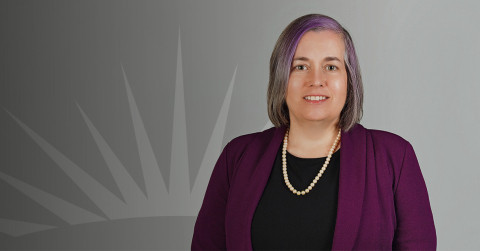
RPM's Value in Continuing Education
Co-authored by Mike Kelch and Joey Sveda.
In the spring of 2019 we attended our first industry event: the Casualty Actuarial Society’s (CAS) Ratemaking, Product and Modeling (RPM) Seminar. RPM serves as a networking event and provides continuing education for CAS members by way of numerous workshops and sessions. We both work on predictive analytics projects, which made this event relevant to our work and solidified our understanding on many of the topics we work on every day, including modeling methods, model testing and implementation. Below are our individual reflections on the Seminar.
Mike: I attended a workshop on Python to expand my knowledge of different coding languages available to an actuary. Before this workshop, I had knowledge in SAS and R, which are two primary tools actuaries use. Python is a general-purpose coding language that is actively used in the data science field. However, actuaries primarily use coding for statistical analysis and data visualization as opposed to general purposes, such as building applications. For that reason, R can offer some benefits over Python.
Coding languages are often compared/contrasted and there is currently a lot of debate in the analytics industry between R and Python. In terms of data visualization, R comes out on top with more available functions. However, many believe Python is easier to learn for those without a coding background but that was not my experience. At this time, I prefer to use R. I believe this is because, despite attending a day-long workshop, my current knowledge of R is greater and I am therefore more comfortable with it. As the industry changes and actuaries begin to be more intertwined with data science, we might see Python become the prevalent coding language. At that time, I will be more than happy to transfer to Python as my primary language. Until then, I will stay in my wheelhouse with R.
Continuing education in the actuarial industry is extremely valuable to the practice. Actuaries have been evolving with industry changes over the last century and continuing education requirements are key to an actuary’s development. Regulation, technology and professionalism constantly change. Instead of falling behind on developing trends and other changes in the field, actuaries strive to be well prepared.
Joey: The highlight of my experience at RPM was a full-day, hands-on workshop introducing advanced statistical methodologies used to build upon the generalized linear models (GLMs), which many insurers are already using. Random forests, gradient boosting methods and regression splines were all buzzwords I had heard in conversations about modeling but had not had the opportunity to delve into until then. In addition to learning about the basic theory of the techniques discussed, the workshop emphasized running the models in R, interpreting the results and assessing next steps. Taking the time to listen and discuss with practitioners, as opposed to learning solely from a textbook, was invaluable into conceptualizing how Pinnacle can continue to advance the use of machine learning in the services we provide.
A reoccurring theme of both the workshop and conference was the role machine learning plays in the insurance industry. Pricing models are still the most common focus of analytics in insurance where regulation is an ever-present consideration. The goal of machine learning in the context of pricing insurance is not to directly implement models from machine learning methodologies, but rather to use the output from machine learning to guide decisions in creating GLMs.
Random forests, for example, are difficult to interpret and regulators would likely not approve the model for pricing purposes. However, when random forests (or other machine learning methods) are run in addition to a GLM, they can provide an alternative perspective. One benefit of the random forest is that it produces as a variable importance plot that counts the number of trees within the forest containing each specific variable. This plot can point an actuary in the direction of important variables early in the model-building process and can help determine the relative importance of two similar variables where only one is needed.
Multivariate adaptive regression spline (Earth) modeling can serve a similar purpose. Earth models excel in their ability to find cut points that separate numeric variables into statistically significant segments. For example, an Earth model could be used to help determine at what age a driver transitions from being considered youthful to experienced in a rating plan. The Earth model tests cut points within the age range and fits piecewise linear functions in between those points, in addition to the other variables in the model. While the Earth model results may not be implementable, the segmentation used in the model can aid in making more informed decisions about how to handle numeric data in a GLM.
We look forward to watching the insurance industry continue to respond to the growing number of analytic resources available. Developments in data science methods and coding languages will keep us busy as we continue to learn how to use data to solve actuarial problems. We are appreciative of conferences like RPM that provide the opportunity to discover industry trends and hear from practitioners working on the cutting edge.
Mike Kelch is an Actuarial Analyst with Pinnacle Actuarial Resources, Inc. in the Chicago, Illinois office. He holds Bachelor of Business Administration degrees in Actuarial Science and Risk Management Insurance from the University of Wisconsin - Madison. He has experience in assignments involving Enterprise Risk Captives, Loss Reserving and Predictive Analytics. Mike is actively pursuing membership in the Casualty Actuarial Society (CAS) through the examination process
Joey Sveda is an Actuarial Analyst with Pinnacle Actuarial Resources, Inc. in the Bloomington, Illinois office. He holds Bachelor of Business Administration degrees in Actuarial Science and Risk Management Insurance from the University of Wisconsin - Madison. He has experience in assignments involving Loss Reserving, Group Captives and Predictive Analytics. Joey is actively pursuing membership in the Casualty Actuarial Society (CAS) through the examination process.



